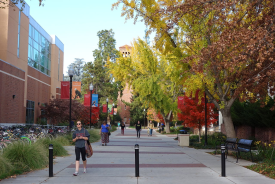Greenland May Become Greener Due To Climate Change
ByBy the end of 2100, climate change could transform Greenland into vast swathes of forest land instead of barren ice sheet, according to scientists.
Currently, only four indigenous tree species thrive in small areas in the south of the Arctic island, while three-quarters is covered by a barren ice sheet.
"Greenland has the potential to become a lot greener," said lead scientist Professor Jens-Christian Svenning, from Aarhus University in Denmark. "Forest like the coastal coniferous forests in today's Alaska and western Canada will be able to thrive in fairly large parts of Greenland, for example, with trees like sitka spruce and lodgepole pine. It will provide new opportunities for the Greenlanders."
The research published Wednesday in the Philosophical Transactions of the Royal Society B showed that a majority of 44 species of North American and European trees and bushes will be able to sprout in Greenland by 2100, even in areas that currently have no native trees.
According to the Guardian, by the end of this century, a key species like the Arctic dwarf birch could be established over more than 400,000sqkm - an area almost the size of Sweden.
In fact, several species could already grow in Greenland today. To test this proposition, various species of trees have been planted in Greenland, including Siberian larch, white spruce, lodgepole pine and Eastern balsam poplar.
The climate alteration could lead to changes in Greenland's ecosystem, including the loss of Arctic animals and plants.
"This will provide new opportunities for the population of Greenland. For example, we see that people use wood wherever there is forest. This could also create new opportunities for activities such as hunting and the commercial exploitation of berries. Forest and scrub will also reduce erosion and affect water run-off," said Svenning.
Lack of greenery in the island is due to the slow expanding speed of the forests. The researchers' model revealed that Greenland's indigenous trees are estimated to take more than 2,000 years to spread to every area that will have a suitable climate by 2100.
© 2025 University Herald, All rights reserved. Do not reproduce without permission.








